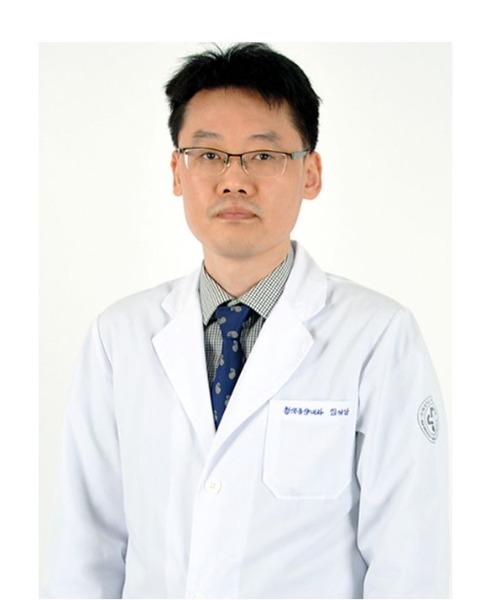QoL and Patient-Reported Outcome and Supportive Care
Poster Session 3
P-472: Evaluation of the usefulness of the QuantiFERON-TB Gold In-Tube test for the detection of latent Mycobacterium tuberculosis infections in patients underwent autologous stem cell transplantation
Friday, September 29, 2023
1:15 PM - 2:15 PM EEST

Sung-Nam Lim
Associate professor
Inje University College of Medicine, Haeundae Paik Hospital
Busan, Pusan-jikhalsi, Republic of Korea
Introduction: Tuberculosis (TB) is still a major global public health problem. The likelihood of developing active disease is much higher in frail patients, such as those with hematopoietic stem cell transplantation (HSCT). Patients undergoing HSCT have severe and prolonged immunodeficiency due to underlying hematologic malignancies, chemo- and immunosuppressive therapy, and are generally considered to be at higher risk for active TB or reactivation of latent TB infections.
The aim of this study was to evaluate the occurrence of active TB in patients who received a QuantiFERON test for the detection of latent TB infection.
Methods: This is a retrospective observational cohort study, including all adult patients (>18 years old) with plasma cell neoplasms who received autologous stem cell transplantation (ASCT).
In total, 80 patients who performed an interferon-gamma release assay and underwent autologous stem cell transplantation between December 2010 and December 2022 were recruited to determine the usefulness of latent TB infection screening tests.
Results: Most of the enrolled patients were male (58.7%) with a median age of 54 years old (range, 40 ~ 69 years old). Remission induction therapy was as follows; 40 (58.8%) of bortezomib-based regimens, such as VD or VTD, 12 (17.6%) of lenalidomide-based regimens, such as RVD, and 16 (23.5%) of thalidomide-based regimens, such as TD or TCD. Fifty-three (78%) patients achieved partial response after remission induction and the maximal response before ASCT was as follows; 24 (35.3%) patients of CR, 28 (41.2%) of VGPR, 14 (20.5%) of PR, and 2 (2.9%) of SD, respectively. For conditioning regimen, 54 (79.4%) patients received high-dose melphalan and 14 patients received busulfan-based conditioning.
The QuantiFERON screening test was performed within one month before ASCT. Sixty-eight (85%) patients out of a total of 80 patients performed QuantiFERON test screening: 10 (14.7%) were positive, 6 (8.8%) indeterminate, and 52 (76.5%) were negative. There was no difference in test-positive rates between men and women. However, the positive rate was statistically significantly higher in elderly patients more than 60 years (p=0.014). Only 20% of the patients whose test was QuantiFERON test positive took isoniazid prophylaxis, and none of them progressed to active TB over a median follow-up period of 38 months. Active TB recurrence did not occur even in 80% of QuantiFERON test-positive who did not take isoniazid, also. All patients who took isoniazid prophylaxis discontinued it prematurely because of drug side effects.
Conclusions: In conclusion, 14.7% of our ASCT population had latent TB infection and only 20% of them received isoniazid prophylaxis. Regardless of the use of isoniazid prophylaxis, there was no case of active TB progression in a cohort of 68 multiple myeloma patients who underwent ASCT from 2010 to 2022.
The aim of this study was to evaluate the occurrence of active TB in patients who received a QuantiFERON test for the detection of latent TB infection.
Methods: This is a retrospective observational cohort study, including all adult patients (>18 years old) with plasma cell neoplasms who received autologous stem cell transplantation (ASCT).
In total, 80 patients who performed an interferon-gamma release assay and underwent autologous stem cell transplantation between December 2010 and December 2022 were recruited to determine the usefulness of latent TB infection screening tests.
Results: Most of the enrolled patients were male (58.7%) with a median age of 54 years old (range, 40 ~ 69 years old). Remission induction therapy was as follows; 40 (58.8%) of bortezomib-based regimens, such as VD or VTD, 12 (17.6%) of lenalidomide-based regimens, such as RVD, and 16 (23.5%) of thalidomide-based regimens, such as TD or TCD. Fifty-three (78%) patients achieved partial response after remission induction and the maximal response before ASCT was as follows; 24 (35.3%) patients of CR, 28 (41.2%) of VGPR, 14 (20.5%) of PR, and 2 (2.9%) of SD, respectively. For conditioning regimen, 54 (79.4%) patients received high-dose melphalan and 14 patients received busulfan-based conditioning.
The QuantiFERON screening test was performed within one month before ASCT. Sixty-eight (85%) patients out of a total of 80 patients performed QuantiFERON test screening: 10 (14.7%) were positive, 6 (8.8%) indeterminate, and 52 (76.5%) were negative. There was no difference in test-positive rates between men and women. However, the positive rate was statistically significantly higher in elderly patients more than 60 years (p=0.014). Only 20% of the patients whose test was QuantiFERON test positive took isoniazid prophylaxis, and none of them progressed to active TB over a median follow-up period of 38 months. Active TB recurrence did not occur even in 80% of QuantiFERON test-positive who did not take isoniazid, also. All patients who took isoniazid prophylaxis discontinued it prematurely because of drug side effects.
Conclusions: In conclusion, 14.7% of our ASCT population had latent TB infection and only 20% of them received isoniazid prophylaxis. Regardless of the use of isoniazid prophylaxis, there was no case of active TB progression in a cohort of 68 multiple myeloma patients who underwent ASCT from 2010 to 2022.
